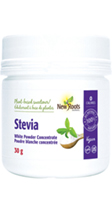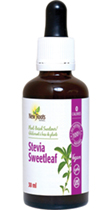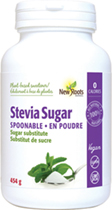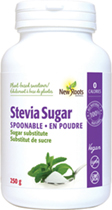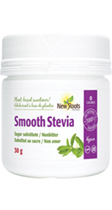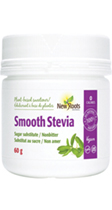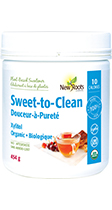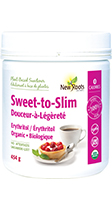Eight Hidden Sugar Food Traps
Sugar tastes wonderful to most and is actually needed by our bodies to create energy. Sugars occur naturally in foods such as fruits, vegetables, dairy products, and grains. Whole-food sources that contain natural sugars often come with other nutrients such as fibre, antioxidants, minerals, and vitamins. However, not all sugars are created equal. Added sugars are often added to packaged products to enhance flavour. The real problem is that excess sugar intake, regardless of what type of sugar it’s coming from, can contribute to overall health and weight. Excess sugar intake (especially from added sugars) has been linked to weight gain, increased risk of heart disease, type 2 diabetes, and other chronic health conditions. Excess sugar intake has also been linked to accelerated aging.
Canadians consume an average of 67 g of added or free sugars per day and 106 g of total sugars. In both adults and children, the World Health Organization recommends reducing intake of free sugars to 10% of total energy intake. In an average 2,000 kcal diet, that would mean a maximum of 50 g of added sugars each day, with ideal amounts being much less.
Bottom line: Many of us are consuming more sugar than we should. If you are trying to reduce your sugar intake, you need to better understand just how much you are consuming each day. One of the main reasons you might overconsume sugar is because of “sugar traps” or hidden sugars. These traps create the illusion that what we are consuming is healthy, while the sugars quickly add up. If you are looking to improve your health this new year, lose weight, or better manage your blood sugars, here are eight sugar traps you should try to limit or avoid.
Yogurt
Yogurt can make for a healthy snack or meal option. Plain yogurts will have naturally occurring sugars, with up to 10 g of sugar per cup. However, this amount gets even higher with flavoured yogurts. For example, a strawberry-flavoured yogurt will have more than 20 g of sugar per cup. Be careful with low-fat yogurts as well; often, the removal of fat will increase the amount of added sugars.
Tip: Try to opt for plain yogurts and add your own fruit to it instead.
Salad Dressings
Salads are a convenient way to get a variety of vegetables into your diet. However, prepared salad dressings can be a big sugar culprit, as they are often loaded with added sugars. This is part of the reason salads can seem so tasty. For example, a kale salad with a bottled poppy-seed dressing can contain more than 20 g of sugar in a typical serving of 1–2 cups of salad.
Tip: Try making your own salad dressing more often. Adding just a teaspoon of honey will sweeten your salad dressing but only add 5 g of sugar.
Condiments and Premade Sauces
These sauces—such as ketchup, BBQ sauce, teriyaki sauce, sweet-and-sour sauces, etc.—can be major sugar traps, because they often contain a lot of added sugars in a small amount (1–2 tablespoons). For example, ketchup contains 4 g of sugar per tablespoon and BBQ sauce about 7 g, which can easily add up when marinating chicken.
Tip: Choose condiments with lower amounts of sugar. Be mindful of how much sugar you are using. Try adding flavour to your meals with herbs and spices instead of sauces.
Premade Smoothies
Similar to salads, smoothies can be an easy and delicious way to get in your fruit and veggies each day. I personally love smoothies, but they can often be filled with fruit and fruit juices. Although fruit is a source of natural sugar, the amount of it you consume in smoothies can be a lot, especially when there are multiple different fruits and juices involved. Sure, they taste delicious and healthy, but having something like this daily can be a major source of hidden sugars working against your health goals. For example, a regular-sized smoothie made at a smoothie shop can often have more than 50 g of sugar.
Tip: Try making your own smoothies more often. Smoothies are a great way to get your veggies and fruits in. Making a smoothie at home can be a way to control how much sugar you are intaking while still getting the benefit of eating more fruits and veggies. You can even choose to include more low-sugar fruits (see more on that below).
Try: My green refresh smoothie (see flourishbodyandmind.com).
Coffee and Specialty Drinks
I do a lot of work with weight management, and one of the first things I focus on is swapping drinking calories for eating calories. It is very easy for calories (and sugar) to add up when we drink them—the problem is you often don’t feel satiated after drinking. Something like a specialty coffee with caramel sauce or iced coffee will taste delicious but certainly won’t leave you feeling full, as if you just ate a snack or small meal. For example, most regular iced coffees can contain upwards of 30 g of added sugars, and a caramel coffee latte can be the same or more.
Even adding 1–2 teaspoons of sugar to your coffee contributes to 5–10 g of added sugars, and if you are having more than one coffee a day, it can quickly add up.
Tip: Save your specialty coffee drinks as a treat. If you do drink coffee with sugar, consider a way you can slowly reduce the amount of sugar you use and still enjoy your coffee. Remember: It takes time for your taste buds to adjust, so start slowly.
High-Sugar Fruits
Fruits are a great source of fibre, vitamins, and antioxidants. I truly believe we should all eat and enjoy fruit—after all, fruit is nature’s candy. That being said, if you are trying to watch your sugar intake for whatever reason, you may want to limit the amount of high-sugar fruit you consume. That might mean sticking to one high-sugar fruit each day or keeping the portion controlled at ¾ cup full. If you are using fruit to make smoothies, try to keep to using only one high-sugar fruit at a max of ½ cup, and using some veggies or another low-sugar fruit to make up the rest.
See the chart below for examples of low-, moderate-, and high-sugar fruits.
|
Low-Sugar Fruits |
Moderate-Sugar Fruits |
High-Sugar Fruits |
|
Raspberries (5 g per cup) |
Oranges (12 g per fruit) |
Passionfruit (24 g per cup) |
|
Strawberries and blackberries (7 g per cup) |
Peaches (12 g per fruit) |
Pomegranate seeds (24 g per cup) |
|
Kiwi (6 g per fruit) |
Watermelon (10 g per cup) |
Mangoes (23 g per cup) |
|
Grapefruit (9 g per fruit) |
Cantaloupe (12 g per cup) |
Cherries (20 g per cup) |
|
|
Small apple (15 g per apple) |
Grapes (15 g per cup) |
|
|
Small pear (14 g per fruit) |
|
|
|
Medium banana (14 g per fruit) |
|
*All sugar amounts are approximate amounts.
Keep in mind the amount of sugar you get from fruit really depends on the amount eaten. For example, watermelon can be high in sugar if eating 3–4 cups of it (which I know I can easily do), but it can be moderate if only eating 1 cup.
High-Sugar Vegetables
Similar to fruits, there are vegetables (mainly your starchy/root vegetables) that are higher in sugar as well. In Canada over the winter months, a lot of what is available locally and seasonally are root vegetables, and they are great sources of nutrition. However, if you are watching your sugar intake, you will want to ensure your plate isn’t filled with high-sugar veggies at each meal and be mindful of the portion size of these veggies.
Tip: Keep starchy or high-sugar veggies to a smaller portion, or pair that cup of corn with another veggie that isn’t as high in sugar to help fill your plate (and belly) with good nutrition and veggies.
|
High-Sugar Veggie Examples |
|
Corn |
|
Onions |
|
Beets |
|
Carrots |
|
Squashes |
|
Peas |
Dry Fruits
Dry fruits can be a great addition to salads, yogurt, and trail mix. The drying process also makes them super sweet and delicious.
Dry fruits can be a great way to curb your sweet tooth in a way that is “healthier,” as the sugars are coming from natural sources. What you want to be mindful of is how much dried fruit you are consuming. A small amount can quickly add up to a lot of extra sugar. For example, in just ½ cup of raisins, you are getting more than 40 g of sugar (much more than you would get in ½ cup of whole grapes).
Tip: If you enjoy dried fruit, try to keep to 1–2 pieces (e.g., 2 dried apricots) or ¼ cup raisins. Also, read the label: Some dried fruit will contain added sugars (this is often the case for cranberries), so try to choose dried fruits with no sugars added. Choose fresh fruit over dried fruit on most days.
 Angela Wallace, MSc, RD
Angela Wallace, MSc, RD
A registered dietitian with the College of Dietitians of Ontario, personal trainer, and family-food expert who specializes in women and child nutrition and fitness, she loves helping families get healthy together.
eatrightfeelright.ca
References
Aragno, M., and R. Mastrocola. “Dietary sugars and endogenous formation of advanced glycation endproducts: Emerging mechanisms of disease.” Nutrients, Vol. 9, No. 4 (2017): 385.
Liu, S., L.L. Munasinghe, A. Ohinmaa, and P.J. Veugelers. Added, free and total sugar content and consumption of foods and beverages in Canada. Ottawa: Statistics Canada Health Reports, 2020. · https://www150.statcan.gc.ca/n1/en/pub/82-003-x/2020010/article/00002-eng.pdf

 Stores
Stores

